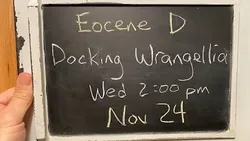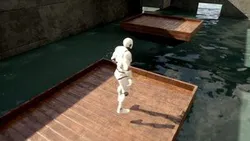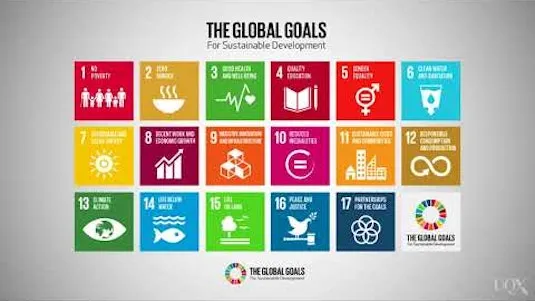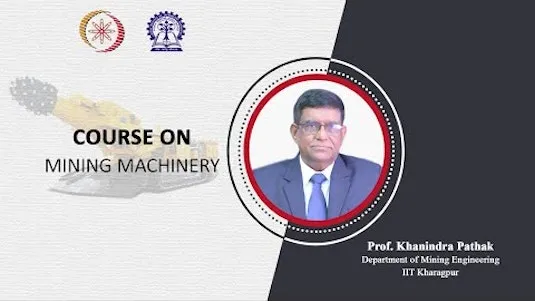
Eocene D - Docking Wrangellia w& Basil Tikoff 
This lecture provides an overview of Large Igneous Provinces (LIPs) and three hot spots: Yellowstone (YHS), Galapagos (GHS), and Iceland (IHS). Using Google Earth, the lecture demonstrates the locations of these hot spots and provides a link to a website for further information. ▼
ADVERTISEMENT
Course Feature
![]() Cost:
Cost:
Free
![]() Provider:
Provider:
Youtube
![]() Certificate:
Certificate:
Paid Certification
![]() Language:
Language:
English
![]() Start Date:
Start Date:
On-Demand
Course Overview
❗The content presented here is sourced directly from Youtube platform. For comprehensive course details, including enrollment information, simply click on the 'Go to class' link on our website.
Updated in [February 21st, 2023]
Eocene D - Docking Wrangellia w/ Basil Tikoff is an online course that provides an in-depth exploration of the geological history of the Eocene period. It covers the Large Igneous Province (LIP), the Yellowstone Hot Spot (YHS), the Galapagos Hot Spot (GHS), and the Iceland Hot Spot (IHS). It also covers the use of Google Earth to explore the geological features of Iceland, Yellowstone, Hawaii, and Galapagos. The course also includes a review of Nick's website - Eocene Papers, Shellnutt 2021, Linking the Wrangellia Flood Basalts to the Galapagos Hotspot, and Myrl Beck Frivolities - Paleomagnetism of Wrangellia. It also covers the evidence that proves where Wrangellia docked, as well as Basil Tikoff's email on the subject. The course also covers thrust faults, plutons, and the 100 Ma Deformation. It also covers the beginnings of the Rocky Mountains and the upcoming Penrose Conference. Finally, the course covers what people agree on and provides a Q&A session and a toast and goodbye.
Learners can gain a comprehensive understanding of the geological history of the Eocene period, including the Large Igneous Province (LIP), the Yellowstone Hot Spot (YHS), the Galapagos Hot Spot (GHS), and the Iceland Hot Spot (IHS). They can also learn about the use of Google Earth to explore the geological features of Iceland, Yellowstone, Hawaii, and Galapagos. Learners can also gain an understanding of the evidence that proves where Wrangellia docked, as well as thrust faults, plutons, and the 100 Ma Deformation. They can also learn about the beginnings of the Rocky Mountains and the upcoming Penrose Conference. Finally, learners can gain an understanding of what people agree on and participate in a Q&A session and a toast and goodbye.
[Applications]
Students who have completed this course can apply their knowledge by researching the evidence that proves where Wrangellia docked. They can also explore the thrust faults and plutons associated with the docking of Wrangellia. Additionally, they can investigate the 100 Ma deformation and the beginnings of the Rocky Mountains. Finally, they can attend the upcoming Penrose Conference to discuss the evidence and theories related to the docking of Wrangellia.
[Career Paths]
1. Geoscientist: Geoscientists study the physical aspects of the Earth, such as its composition, structure, and processes, to better understand the planet and its history. They use a variety of tools and techniques, such as field mapping, geophysical surveys, and laboratory analysis, to collect data and interpret their findings. Geoscientists are in high demand as the world looks to better understand the environment and its resources.
2. Petroleum Engineer: Petroleum engineers design and develop methods for extracting oil and gas from deposits below the Earth's surface. They use a variety of technologies, such as drilling, fracturing, and reservoir simulation, to maximize the efficiency of the extraction process. Petroleum engineers are in high demand as the world looks to increase its energy production and reduce its reliance on fossil fuels.
3. Environmental Scientist: Environmental scientists study the environment and its resources to better understand the impact of human activities on the planet. They use a variety of tools and techniques, such as field sampling, laboratory analysis, and computer modeling, to collect data and interpret their findings. Environmental scientists are in high demand as the world looks to reduce its environmental impact and develop sustainable solutions.
4. Climate Scientist: Climate scientists study the Earth's climate system and its effects on the environment. They use a variety of tools and techniques, such as satellite imagery, computer modeling, and field sampling, to collect data and interpret their findings. Climate scientists are in high demand as the world looks to better understand the effects of climate change and develop strategies to mitigate its impacts.
[Education Paths]
1. Geology Degree: A geology degree is a great way to learn about the Earth's history and the processes that shape it. This degree path focuses on the study of rocks, minerals, and fossils, as well as the physical and chemical processes that form them. It also covers topics such as plate tectonics, volcanology, and sedimentology. With the increasing demand for geologists in the energy and environmental sectors, this degree path is becoming increasingly popular.
2. Earth Science Degree: An Earth Science degree is a great way to learn about the Earth's atmosphere, oceans, and climate. This degree path focuses on the study of the Earth's atmosphere, oceans, and climate, as well as the physical and chemical processes that shape them. It also covers topics such as meteorology, oceanography, and atmospheric chemistry. With the increasing demand for Earth scientists in the energy and environmental sectors, this degree path is becoming increasingly popular.
3. Environmental Science Degree: An Environmental Science degree is a great way to learn about the Earth's environment and the processes that shape it. This degree path focuses on the study of the Earth's environment, as well as the physical and chemical processes that form it. It also covers topics such as ecology, conservation, and environmental policy. With the increasing demand for environmental scientists in the energy and environmental sectors, this degree path is becoming increasingly popular.
4. Petroleum Engineering Degree: A Petroleum Engineering degree is a great way to learn about the Earth's energy resources and the processes that shape them. This degree path focuses on the study of the Earth's energy resources, as well as the physical and chemical processes that form them. It also covers topics such as drilling, production, and reservoir engineering. With the increasing demand for petroleum engineers in the energy and environmental sectors, this degree path is becoming increasingly popular.
Course Provider

Provider Youtube's Stats at AZClass
Discussion and Reviews
0.0 (Based on 0 reviews)
Explore Similar Online Courses

Creating Your First Game in Unreal Engine 5

Rigid Tapping with New Motor and VFD (DIY CNC Mill Upgrades 3)

Python for Informatics: Exploring Information

Social Network Analysis

Introduction to Systematic Review and Meta-Analysis

The Analytics Edge

DCO042 - Python For Informatics

Causal Diagrams: Draw Your Assumptions Before Your Conclusions

Whole genome sequencing of bacterial genomes - tools and applications

Mining Engineering

The Future of Mining?


Start your review of Eocene D - Docking Wrangellia w& Basil Tikoff